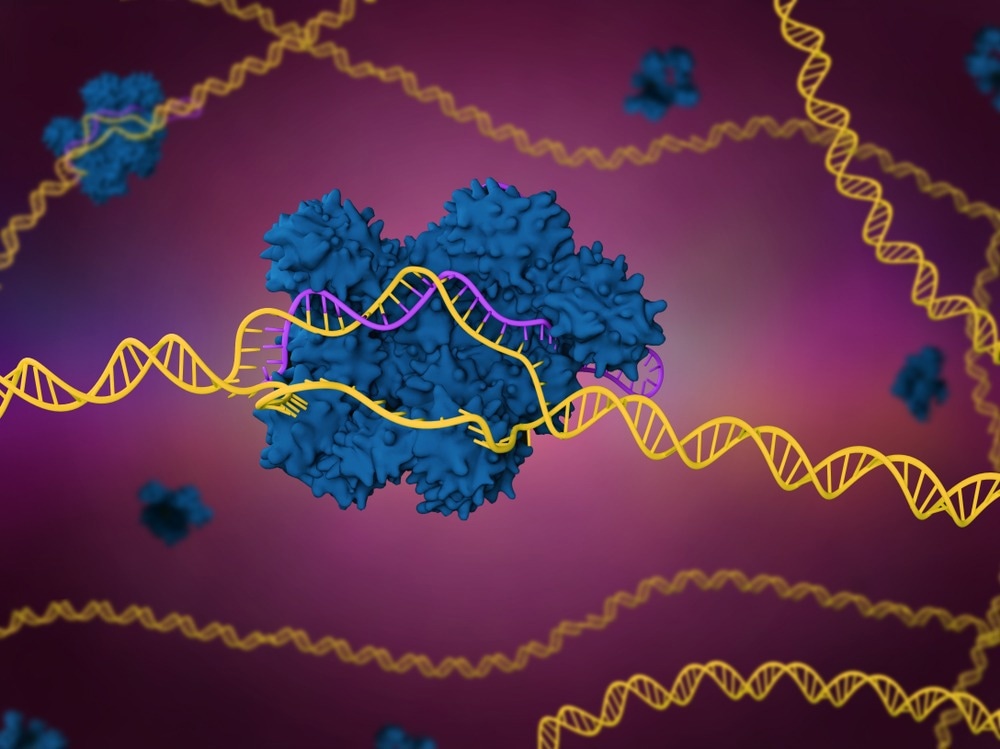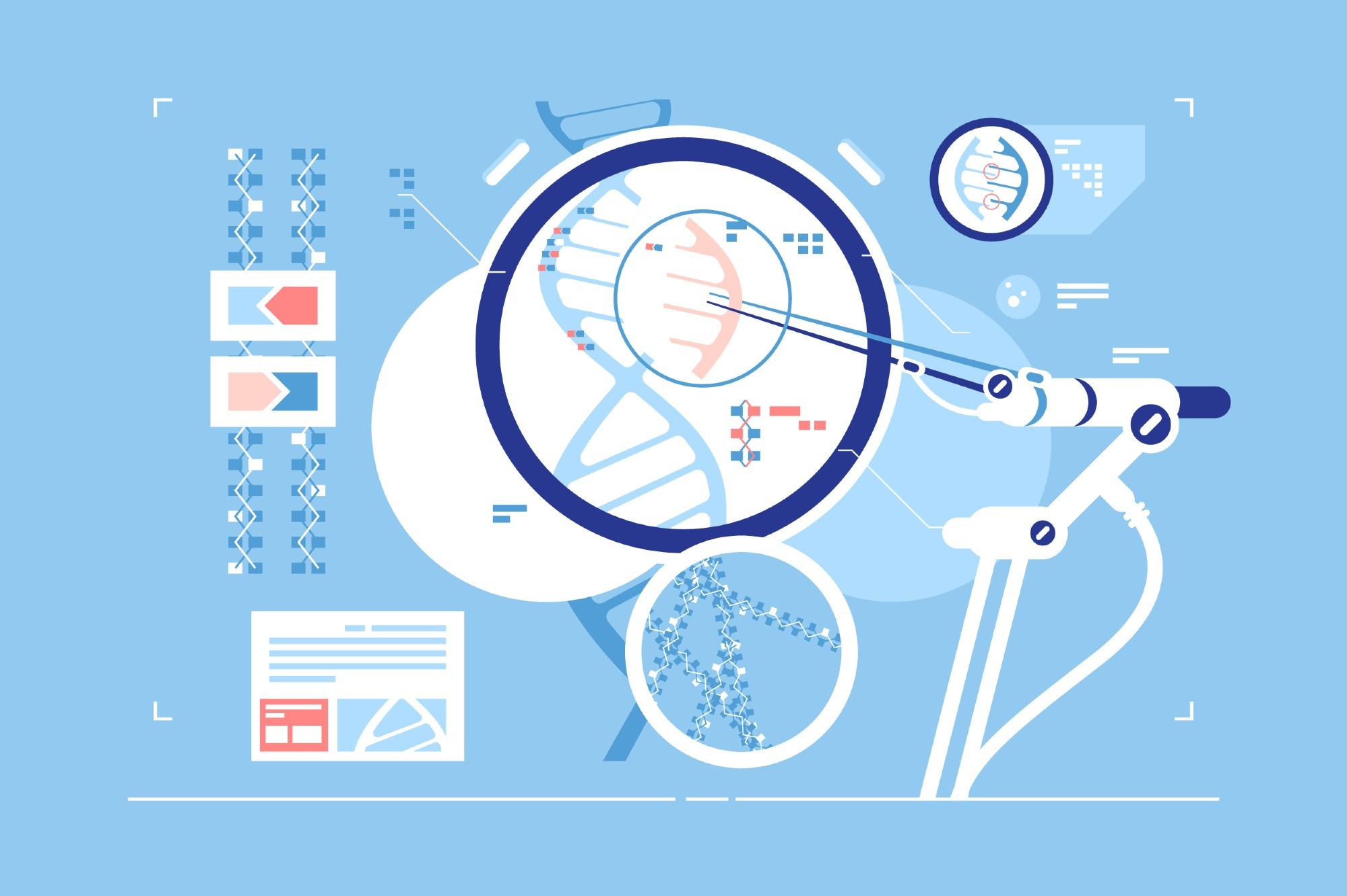We currently stand in the genetic revolution, where humans are developing technologies capable of changing the natural world. In 2003, the human genome project was completed, revealing about 92% of the human genome. In the years that followed, scientists raced to become the first to create the technology that could successfully manipulate genetic information for important benefits, such as eradicating disease.
In 2012, American scientist Jennifer Doudna and French scientist Emmanuelle Charpentier discovered CRISPR-Cas9 technology, which has since been used to edit human DNA in vivo successfully. Here, we look at the gene editing market, covering how the technology is currently used and how it may develop in the future. As well as examining the market size, key regions, and how experts predict it may grow.
What is gene editing and how does it work? | Wellcome
Application Areas of Gene Editing
Research into the human genome has accelerated in recent years due to significant advancements in genome editing. Never before have scientists had access to the tools that allow them to better understand the role of individual genes in the development of diseases. Gene editing has opened up a realm of possibilities, and current applications of the technology lie mainly within disease modeling, gene therapy development, and clinical trials. Recently, applications of gene editing have also emerged in diagnostics.
Gene editing has allowed for better disease modeling and has accelerated the development of gene therapy for several disease areas, including cancer, cardiovascular disease, metabolic diseases, neurodegenerative diseases, viral diseases, and hereditary eye diseases. For example, gene editing tools that have emerged in recent years (such as ZFNs, TALENs, and CRISPR/Cas9) have made it possible to examine the function of individual genes. In addition, gene editing technology has made it possible to manipulate cellular function, opening the door to creating genetically engineered animals to use in animal disease models. These models have revealed the etiology behind various diseases and have uncovered the biological mechanisms that can be therapeutically targeted.
Gene editing has been leveraged in clinical trials. Research into cancer, viruses, and hematological diseases has particularly benefitted from this application of gene editing technology. In recent years, ex vivo genome editing has been widely used to genetically alter cells in vitro before re-engrafting them back into patients. Clinical trials have effectively used this method to produce more effective CAR T cells for cancer treatment, among others.
Finally, gene editing technology has become a relied-upon tool for developing novel diagnostics for infectious and non-infectious diseases. Since CRISPR was first discovered, 6 types and 22 subtypes of CRISPR systems have been identified. Of these systems, CRISPR-Cas systems have been used to diagnose viral, bacterial, and non-infectious diseases via the cleavage activity of CRISPR enzymes. Diagnostic tests have also successfully been developed for detecting the SARS-CoV-2 virus using Cas12 and Cas13 enzymes.

Image Credit: Meletios Verras/Shutterstock.com
Recent Developments in Gene Editing
While applications in gene editing have mostly focussed on tackling disease, recent research has revealed additional potential applications of the technology. First, a study published in the journal iScience by researchers in Sweden has supported the notion that Crispr-Cas9 may be useful in resurrecting extinct species. The study identified 87 genes that were affected by deletions or short insertions over the course of the evolution of the wooly mammoth. These findings have implications for the possibility of resurrecting extinct species by inserting key gene variants from extinct species into genomes obtained from living relatives.
New studies have also highlighted the possible use of gene editing in resolving the worsening global food crisis. Currently, around 10% of the world's population does not have enough food to eat. This problem is predicted to worsen as populations increase and competition for farming land intensifies. A recent publication showed that gene editing could successfully augment tomatoes to improve their nutrition profile. Additionally, another study has used gene editing to make crops more resultant to pests, which will likely be important to ensuring bountiful and reliable crop yields.
Finally, recent studies have also shown that gene editing can be used to address the increasing antibiotic resistance we see around the globe. Scientists have learned how to trigger 'silent' gene clusters in bacteria, which could provide new sources of antibiotic candidates.
Current Global Market of Gene Editing
The global market for gene editing was valued at $3.9 billion in 2021. Experts predict that this valuation will climb to $7.4 billion by 2031, growing at a CAGR of 6.7% over the decade. North America represents the highest revenue contributor, accounting for just under half of the market (44.34% market share), equating to around $1.7 billion in revenue in 2021. Over the next ten years, the North American market will likely grow at a CAGR of 6.6%, almost identical to the global market growth rate. Europe is the second most important region for the gene editing market, accounting for 26.5% of the market share in 2021.
Over the next decade, the fastest growing regions, however, will not be North America or Europe. Asia-Pacific and LAMEA are predicted to grow at CAGRs of 7.7% and 7.0% between 2022 and 2032.
Currently, the market is split by the following technologies: zinc finger nucleases (ZFNs), transcription activator-like effector-based nucleases (TALENs), CRISPR-Cas9 gene editing, and restriction enzymes. This may change as technology develops and new technology emerges.

Image Credit: Kit8.net/Shutterstock.com
Future Directions of Gene Editing
Research in gene editing is currently booming. In the coming years, we will likely see developments in the currently available technologies, which will likely advance clinical research and lead to novel therapeutics and diagnostics. Additionally, there will likely be advancements in the aforementioned areas of recent development in the field, with new applications of gene editing technology emerging.
Finally, other areas of research are currently in their very early stages. Recent research has indicated that gene editing may eventually be used in psychology to shed light on how social behavior develops. Researchers at Georgia State University recently produced gene-edited hamsters revealing the biology behind social behavior that may be fundamental to deepening our understanding of a diverse group of neuropsychiatric disorders.
Final Thoughts
Overall, it is an exciting time for gene editing technology. It has great potential to solve some of the most urgent challenges humans face today, including disease and world hunger. In the coming years, we will likely see the technology mature, with numerous novel applications of the technology developed and significant scientific advancements achieved thanks to it.
Sources:
- 2022. Gene Editing Market By Technology (Zinc Finger Nucleases (ZFNs), Transcription Activator-Like Effector-based Nucleases (TALENs), CRISPR-Cas9 Gene Editing, Restriction Enzymes, Others), By Application (Gene editing, Cell Line Engineering, Animal Genetic Engineering, Plant Genetic Engineering, Drug development, Others), By End User (Biotechnology and Pharmaceutical Companies, Academic and Government Research Institutes, Contract Research Organizations): Global Opportunity Analysis and Industry Forecast, 2021-2031 [online]. Allied Market Research. Available at: https://www.alliedmarketresearch.com/gene-editing-market-A10973 (Last accessed August 2022)
- Ameruoso, A., Villegas Kcam, M., Cohen, K. and Chappell, J., 2022. Activating natural product synthesis using CRISPR interference and activation systems in Streptomyces. Nucleic Acids Research, 50(13), pp.7751-7760. https://academic.oup.com/nar/article/50/13/7751/6633886
- Jolany vangah, S., Katalani, C., Boone, H., Hajizade, A., Sijercic, A. and Ahmadian, G., 2020. CRISPR-Based Diagnosis of Infectious and Noninfectious Diseases. Biological Procedures Online, 22(1). biologicalproceduresonline.biomedcentral.com/.../s12575-020-00135-3
- Kandul, N., Liu, J., Buchman, A., Shriner, I., Corder, R., Warsinger-Pepe, N., Yang, T., Yadav, A., Scott, M., Marshall, J. and Akbari, O., 2022. Precision Guided Sterile Males Suppress Populations of an Invasive Crop Pest. GEN Biotechnology, 1(4), pp.372-385. https://www.liebertpub.com/doi/10.1089/genbio.2022.0019
- Li, H., Yang, Y., Hong, W., Huang, M., Wu, M. and Zhao, X., 2020. Applications of genome editing technology in the targeted therapy of human diseases: mechanisms, advances and prospects. Signal Transduction and Targeted Therapy, 5(1). https://www.nature.com/articles/s41392-019-0089-y#Sec6
- Li, J., Scarano, A., Gonzalez, N., D’Orso, F., Yue, Y., Nemeth, K., Saalbach, G., Hill, L., de Oliveira Martins, C., Moran, R., Santino, A. and Martin, C., 2022. Biofortified tomatoes provide a new route to vitamin D sufficiency. Nature Plants, 8(6), pp.611-616. https://www.nature.com/articles/s41477-022-01154-6
- Taylor, J., Walton, J., McCann, K., Norvelle, A., Liu, Q., Vander Velden, J., Borland, J., Hart, M., Jin, C., Huhman, K., Cox, D. and Albers, H., 2022. CRISPR-Cas9 editing of the arginine–vasopressin V1a receptor produces paradoxical changes in social behavior in Syrian hamsters. Proceedings of the National Academy of Sciences, 119(19). https://www.sciencedaily.com/releases/2022/05/220516104643.htm
- van der Valk, T., Dehasque, M., Chacón-Duque, J., Oskolkov, N., Vartanyan, S., Heintzman, P., Pečnerová, P., Díez-del-Molino, D. and Dalén, L., 2022. Evolutionary consequences of genomic deletions and insertions in the woolly mammoth genome. iScience, 25(8), p.104826. www.cell.com/.../S2589-0042(22)01098-7
Further Reading